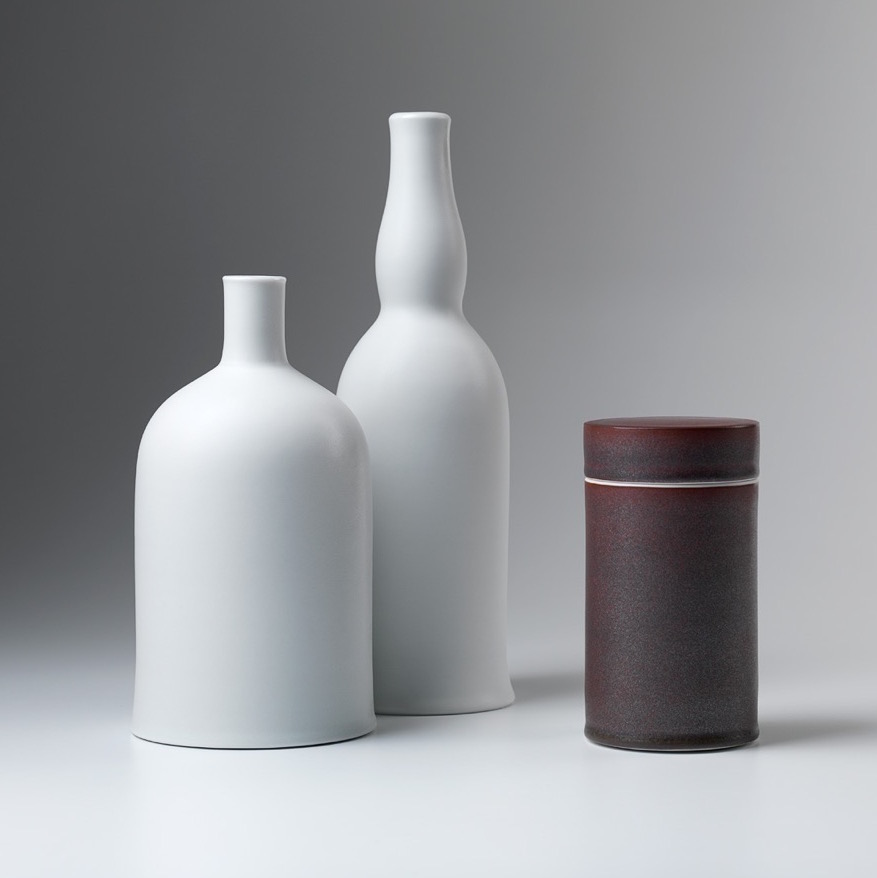Unsuspecting layers peel from Kirsten Coelho’s pottery elevating the modest forms to objects rich with history and narrative. The Australian artist has a brilliant clarity in her work achieved through thoughtful minimization. Coelho spent a decade working in a London studio before returning to Australia where she received her Masters in visual art from the University of South Australia in 2004. In her current exhibition at the Drill Hall Gallery at the Australian National University features a myriad of carefully combined influences including Chinese glazes, ancient Eastern ceramic forms, a contemporary nod to Edmund de Waal, and the most prominent inspiration, nineteenth and early twentieth century enamelware.
In the exhibition titled In the Falling Light Coelho draws inspiration from the commonplace enamelware that immigrants carried with them on their migration from Asia and Europe to Australia. In a 2012 essay by Wendy Walker, Coelho is quoted saying her pots are “metaphors for stories of personal dislocation and endurance that are part of settler and early mining history.” She uses common domestic objects as a canvas for the immigration narrative, a timeless story close to everyone, touching on modern social issues as well as personal challenges of spatial and ideological transitions.
The gently bleeding edges on some of her vessels provide a material link to the enamelware of the 1800’s, mimicking the corrosion of the aging cast iron in fired iron oxide on porcelain. But Coelho’s stark ceramic forms are not a victim of the corrosion that plagues the enamelware, instead they wear it proudly as decoration, a reminder of the stories of perseverance and a symbol of optimism. It also offers, sotto voce, a homage to the late Gwyn Hanssen Pigott.
Justin Crowe is a Writer-at-Large for CFile.

Kirsten Coelho, In the Falling Light, Australian National University Drill Hall Gallery, Porcelain, Photos: Gant Hancock

Kirsten Coelho, In the Falling Light, Australian National University Drill Hall Gallery,Porcelain, Photos: Gant Hancock

Krirsten Coelho, In the Falling Light, Australian National University Drill Hall Gallery, Porcelain, Photos: Gant Hancock

Kirsten Coelho, In the Falling Light, Australian National University Drill Hall Gallery, Porcelain, Photos: Gant Hancock



Thank you Robert Towns. I was about to correct,